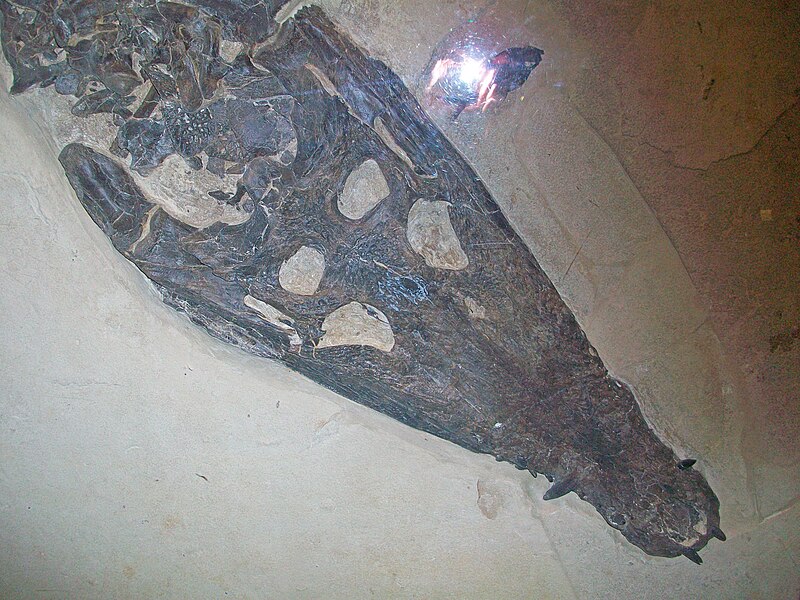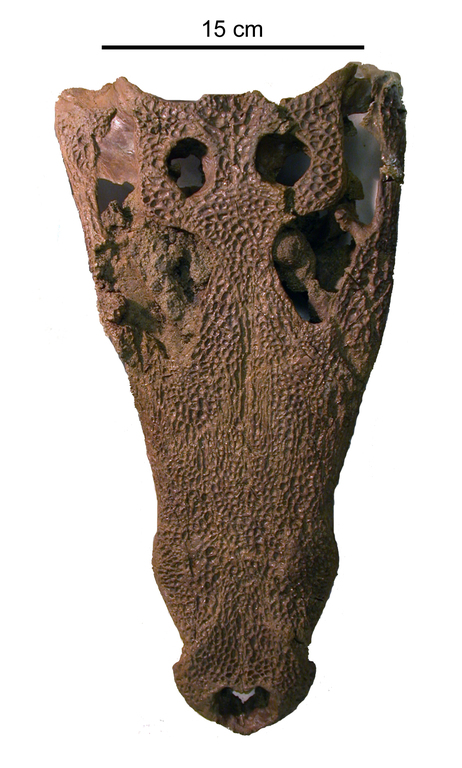[Recent Entries][Archive][Friends][User Info]
| April 14th, 2014 | |||||||||||||||||||
|---|---|---|---|---|---|---|---|---|---|---|---|---|---|---|---|---|---|---|---|
| 08:37 pm [industrialterro] [Link] |
Borealosuchus Borealosuchus is an extinct genus of crocodylians that lived from the Late Cretaceous to the Eocene in North America. It was named by Chris Brochu in 1997 for several species that had been assigned to Leidyosuchus. The species assigned to it are: B. sternbergii, the type species, from the Maastrichtian (Late Cretaceous) of Colorado, Montana, North Dakota, South Dakota, and Wyoming; B. acutidentatus, from the Paleocene of Saskatchewan; B. formidabilis, from the Paleocene of North Dakota and Wyoming; B. griffithi, from the Paleocene of Alberta; and B. wilsoni, from the Eocene of Wyoming. B. formidabilis is particularly well-known, represented by the remains of many individuals from the Wannagan Creek site in North Dakota. Borealosuchus was a mid-sized crocodylian; B. acutidentatus reached up to 2.8 metres (9.2 ft) in length with a 36 centimetres (14 in) skull. Six species of Borealosuchus are currently recognized. In order of their naming, they are B. sternbergii, B. acutidentatus, B. wilsoni, B. formidabilis, B. griffithi, and B. threeensis. Four of these species (B. sternbergi, B. acutidentatus, B. wilsoni, and B. formidabilis) were originally named as species of Leidysuchus. A sixth species of Borealosuchus, B. threeensis, was named in 2012. Fossils of this species were found in the Inversand Company Marl Pit of Gloucester County, New Jersey. The specific name is a reference to Exit 3 of the New Jersey Turnpike, which is the closest highway exit to the type locality. The authors of the paper describing B. threeensis noted that the name is "in reference to a question every New Jersey resident encounters when traveling: 'Oh, you’re from New Jersey? Which exit?". According to Brochu et al. (2012) most phylogenetic analyses recovered Borealosuchus as a crocodylian more closely related to the clade Brevirostres than to Gavialoidea; a few recovered it as more closely related to gavialoids or as a basal eusuchian not belonging to Crocodylia. According to Brochu and coauthors' (2012) own analysis, all three hypotheses are equally parsimonious. Ископаемые останки (1, 2, 3, 4): Tags: Вымершие рептилии, Мел, архозавроморфы, архозавры, диапсиды, крокодиломорфы, крокодилы, круротарзы, мезоэукрокодилии, неозухии, равизухии, эузухии | ||||||||||||||||||
| Comments | |||||||||||||||||||
Ну ты, длинноногая, крутая! Как Келдыш прям!
| |||||||||||||||||||




![[info]](http://lj.rossia.org/img/userinfo.gif)